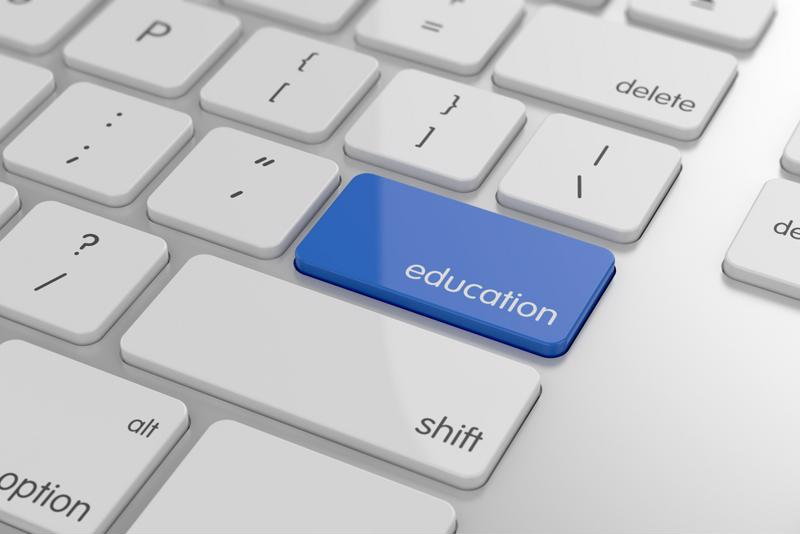
AI in the classroom: How children are utilizing technology in 2022
By Max BurkhalterJanuary 21, 2022
Classrooms around the world have been impacted dramatically by the COVID-19 pandemic, according to data published on Frontiers of Psychology. School closures lasting weeks — or months — at a time forced a change in the way academic learning is delivered. As the education system faces now-familiar uncertainty in the new year, what does an increased reliance on technology mean for children?
Widely credited with defining the concept of artificial intelligence, computer pioneer Alan Turing developed the Turing test in 1950 to determine whether a computer could "think." Fast forward 72 years, and students in classrooms are increasingly relying on the internet of things (IoT) and AI implementations to further their education experience. Defined as the interconnection of computing devices embedded in everyday items across the internet, IoT is revolutionizing industries everywhere. With exciting implementations in the education sector, IoT is transforming the way the next generation of students are learning.
Here are five ways students are utilizing smart tech and IoT breakthroughs to overcome the challenges of a remote – or start and stop –- class attendance school year.
AI integration
While children in the classroom setting may already be using artificial intelligence – via an Instagram filter or one of thousands of other user-friendly applications — educators are increasingly adopting AI technologies into curricula. Interactive presentations, cloud-based homework and coding programs are equipping students with the ability to interact with tech in exciting ways. ScratchJr, a learning platform targeted at children aged 5-7, is one example of an increasing number of applications designed to teach kids how to program their own stories and games. Programs designed to offer real-time feedback during quizzes, exercises and tests alert educators as to areas of the curriculum individual students may struggle with learning. This type of immediate, comprehensive feedback ensures each student is afforded an opportunity to learn at their own pace, while maintaining the structure of the lesson.
Virtually Everywhere
The move to virtual learning at the onset of the pandemic resulted in a shift in the way America's youth are educated. As many as 93% of people with school-aged children reported some form of distance learning, according to a U.S. Census Bureau Household Pulse Survey.
Findings from a 2019 National Center for Education Statistics report using data from the American Community Survey discovered almost all children aged 3-18 had access to internet services — as high as 98%. By interacting with video conferencing solutions like Zoom and Microsoft Teams, children are able to experience a degree of social interaction and connectivity, regardless of their ability to attend traditional classroom settings. This level of interaction with technology – particularly in formative years – has positive effects on deductive reasoning and technical skill proficiency, as students are able to process and navigate information in a digital space.

Esports for extracurricular activity
Insider Intelligence highlighted Newzoo data that estimates the esports ecosystem is set to surpass $1.8 billion in 2022, changing the perception of video games and their effect on youth development. A study published on the Varsity Esports Foundation page has shown that up to 82% of esports team participants are newcomers to activities that occur after class. With education itself shifting to increasingly virtual platforms, many of the activities associated with the school experience are following suit. Fostering a culture of teamwork and inclusiveness for youth who may otherwise have avoided post-school event participation has a net positive effect on social skills and development.
The EdTech boom
Over $20 billion was invested into EdTech globally in 2021, according to study findings published on EdWeek Market Brief. Funding has grown exponentially since the onset of the COVID-19 pandemic, a result of the pivot curriculum suppliers and educators all over the world were forced to make. Students have benefited from access to an array of learning modalities, many of which can effectively communicate to those who require differing education techniques. Translation software, visual learning aids and media for the hearing impaired are but some of the methods ever-evolving applications impact learning outcomes.
5G and the FWA solution
With higher data capacities and increased speed, 5G provides efficient, reliable internet. Traditionally, a 'digital divide' has existed between locations with varying degrees of high speed connectivity – one that has potentially resulted in ease of access disparity between children reliant on virtual. The increased accessibility of Fixed Wireless Access (FWA) allows lighting fast broadband connections in locations where fiber connections are not viable options due to location and cost. With high-speed connectivity readily available to rural communities and previously under-serviced locations, children today are enjoying a more reliable, effective internet experience than ever before.
Connected, like never before
Focusing on education in 2022 requires a commitment to technology. Perle solutions offers fiber media converters and Serial Console Servers in efforts to ensure the students of today have the fastest, most reliable internet access as they embark on a return to school… regardless of the form the return takes. Read Perle education IT success stories to learn more.



